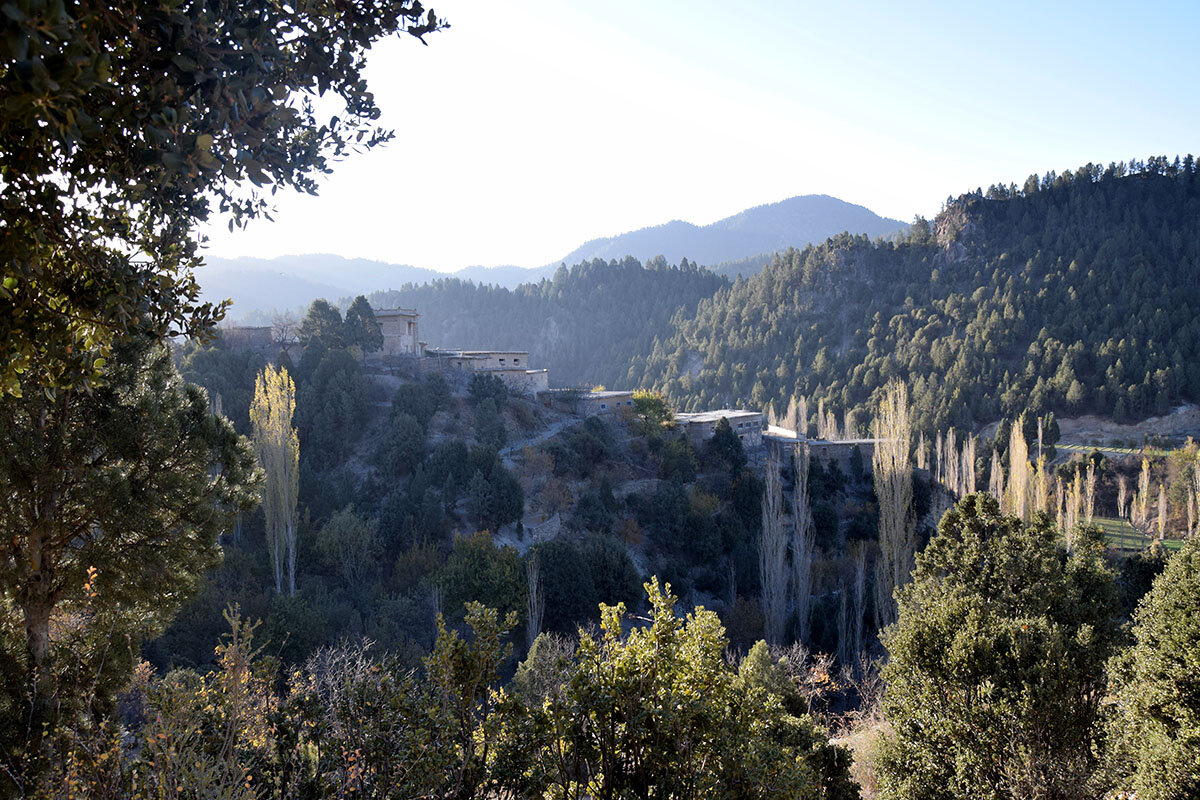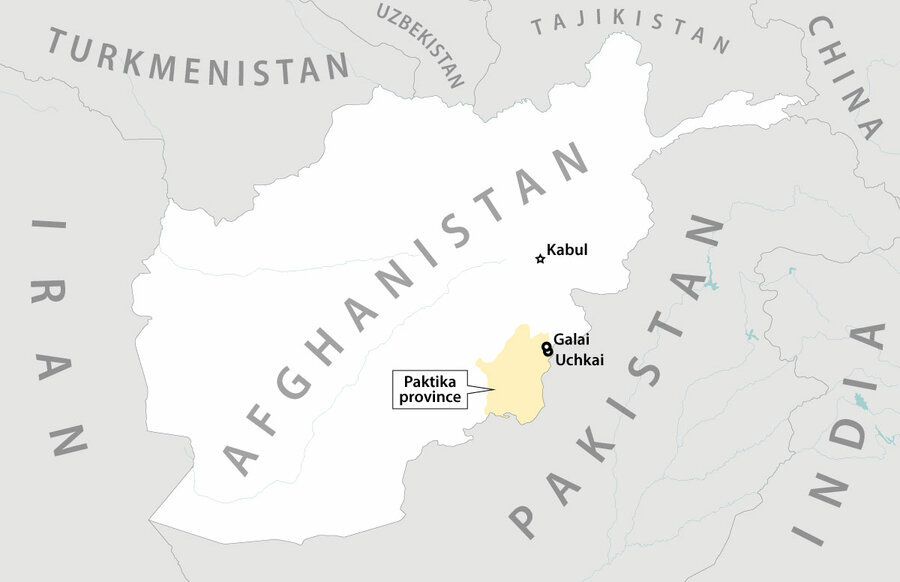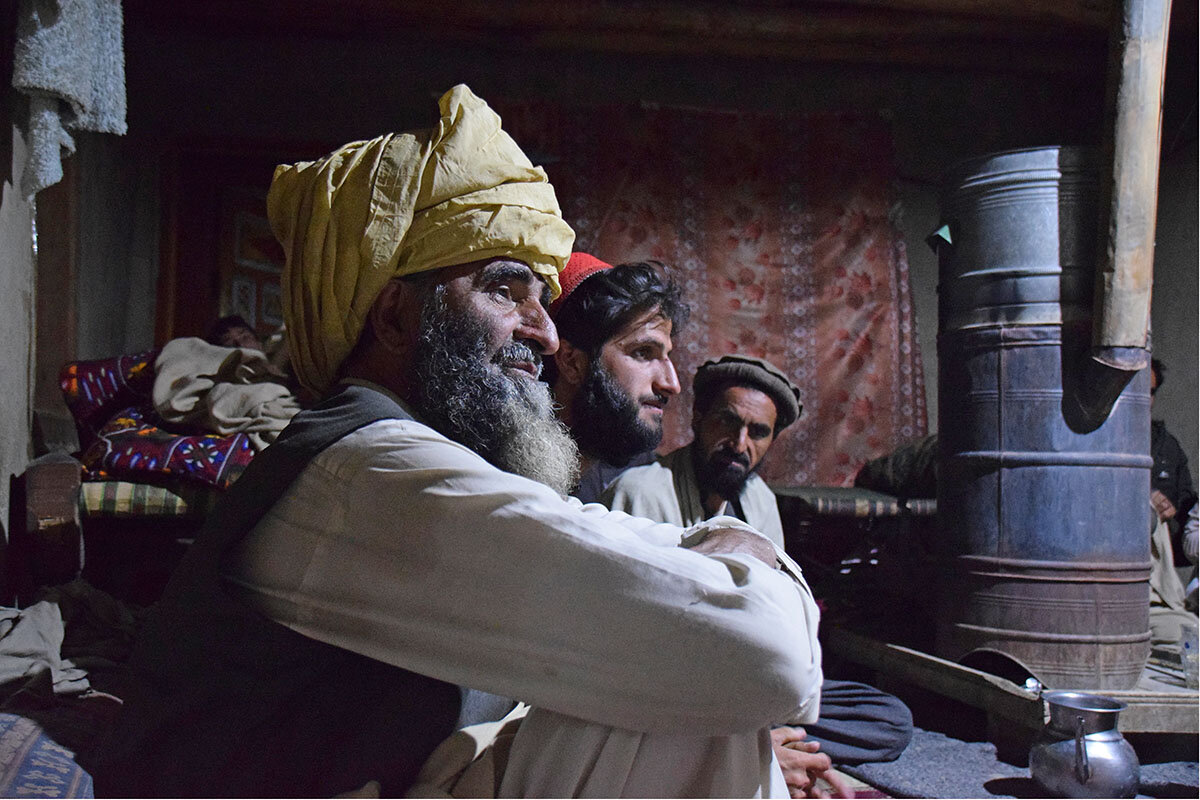Long neglected, Afghan villagers look to outside world for aid
Loading...
| Galai, Afghanistan
Regimes have come and gone in Afghanistan for decades, but in remote reaches of the country there has been one constant: neglect.
For years, the Taliban took advantage of the U.S.-backed government’s failure to provide services to distant villages, using them as staging posts to pave the way for their military victory last August.
But as the Taliban near six months in power, they too have yet to bring aid or development to remote villages like Galai in Gyan district in Afghanistan’s southeastern Paktika province – a frontier region where thick forests cover the hills and where the militants have effectively been ruling for at least a decade.
Why We Wrote This
Afghanistan’s countless rural villages are accustomed to government neglect; the Taliban will be challenged to break that pattern.
“During my whole life, no government ever came to help us,” says Salahuddin, a tribal elder from another remote village in Gyan, whose wrinkled face behind a fuzzy brown beard tells of a life of hardship.
In a simple home decorated with Taliban flags and posters in Gyan, the main village of the district with the same name, where local men have gathered to meet a visiting reporter, Salahuddin gesticulates as he recounts the many problems his people have faced.
His perspective is far from unique. Despite the tens of billions of dollars spent in Afghanistan during two decades of Western intervention, countless remote villages have seen little or no development aid or public services.
Such places were left to fend for themselves, and their inhabitants had little incentive to support the Western-backed republic led by President Ashraf Ghani when the Taliban pushed their advance in late spring and summer 2021.
Ignoring the “dusty districts”
“In the beginning, it was a conceptual mistake”, says Thomas Ruttig, a co-founder of the Afghanistan Analysts Network (AAN) who has worked on Afghanistan, including for the United Nations, since 1988. “The U.S. military did not consider ‘the dusty districts’ in Afghanistan’s hinterlands strategically important, although that was where parts of the Taliban survived.”
And while the United States afterward pursued a variety of strategies in Afghanistan, the U.S. military is now gone; for the first time in 20 years, there is no official U.S. presence whatsoever in the Hindu Kush.
This has had a severe impact on international aid programs, in which the U.S. has played a lead role over the past two decades. Most of them were at least temporarily suspended following the U.S. withdrawal at the end of August.
Yet people in Gyan, as elsewhere across Afghanistan, still put their main hopes in the United Nations and international aid organizations, rather than their own government. The notion that a regime in Kabul should fund and provide services to its citizens seems not to occur to many Afghans, especially in remote parts of the country.
Gyan residents’ trust in, and expectations of, foreign governments are similarly low.
When, after the 9/11 attacks, American troops first passed through the region in their mission to hunt down the remnants of Al Qaeda and their Taliban hosts, nation building was not yet on their agenda.
“U.S. soldiers came to our village only twice or three times shortly after they arrived in Afghanistan. But they only searched houses and, finding nothing, left again. They did not bring any aid,” recalls one man huddled with others last November around a fire in Galai, a hamlet hidden in the vast forest that covers parts of Gyan and neighboring districts.
“The [U.S.-backed] government never came here,” says another. Taliban rule did not change much, either, he adds. “During the past years, the Taliban passed through Galai every now and then, but they did not ask whether we needed anything, and they never provided public services,” he recalls.
Do it yourself
So the people of Galai, and countless similar villages around Afghanistan, had to fend for themselves, even when it came to building basic infrastructure.
“We villagers built the road ourselves about 12 years ago,” says Ali Muhammad, a Galai elder wearing the large yellow turban favored by some tribes in Paktika. The “road” is a poor dirt track that is the only drivable route to the outside world from Galai – as long as there is no heavy rainfall or snow, when it becomes impassable for vehicles.
The lack of roads is not the only problem. In Uchkai, a village at the edge of the forest in Gyan, for example, head teacher Sarif Khan and nine colleagues give lessons to 227 pupils outdoors.
“There is no school building, and there hasn’t been one for the past 17 years,” says Mr. Khan. There is also a shortage of textbooks, and as many as five students must sometimes circle around a single worn-out book.
Such problems have persisted in remote areas like these for decades, as the government in Kabul shifted from a monarchy to a republic, to Soviet-backed communists and then to the mujahideen, before the Taliban first ruled.
For residents of such distant villages, the pattern of hardship and neglect persisted during the 20 years of the Western-backed second Republic, and now under the Taliban’s second Islamic Emirate.
“Protracted needs in hard-to-reach areas of Afghanistan have been documented for a long time,” says John Morse, director of the Danish Committee for Aid to Afghan Refugees, which has been conducting projects in rural areas across Afghanistan since 1984.
“Although some NGOs still made efforts to reach remote villages, it became more and more a security problem to access such areas outside of government control,” adds Mr. Ruttig, the AAN analyst. “The decision of donor countries to focus more on rural areas and agriculture was only made … in 2010. And by then it was probably already too late.”
Mr. Morse, who has worked in Afghanistan in various positions for almost 20 years, says nongovernmental organizations expanded their operations in remote areas of Afghanistan over the past few years, but that “this should have happened years earlier.” Among the challenges the NGOs faced, he says, were security threats and sometimes mixed messages from the Taliban.
Sometimes, agencies focused aid on more populated urban areas so as to make mass distribution more efficient. At the same time, according to a Western employee of a Kabul-based NGO, donor nations’ desire to minimize the exodus of refugees heading to Europe meant they at times obliged NGOs to launch projects in places where large numbers of those refugees came from, rather than where needs were greatest.
“Help us, out of humanity”
While the Taliban during their insurgency did not themselves provide any aid to the neglected hinterlands, their call for jihad against a corrupt and “infidel” government in Kabul resonated more convincingly with many of the often deeply religious Afghan villagers than did Western narratives of democracy and progress, of which they had seen little or nothing at all.
With the Taliban again in charge in Afghanistan, some in remote places like Galai dare to hope that the nationwide reduction in violence will finally allow aid to reach far-flung places like their hamlet.
Yet with ever more people in Afghanistan requiring assistance, and the country suffering a lack of resources, this appears unlikely.
Many Afghans blame this on the U.S. and the international community, disregarding the fact that it has been the Taliban’s actions – in particular their violent takeover of Afghanistan – that have caused most of the current economic crisis that threatens a famine.
“The foreigners have to officially recognize the [Taliban] Emirate and help us, out of humanity,” says Niaz Muhammad, an elder from Galai who uses a crutch to walk. “This is our right.”
This article has been amended to clarify that the reporter met local residents in Galai in a private home.








